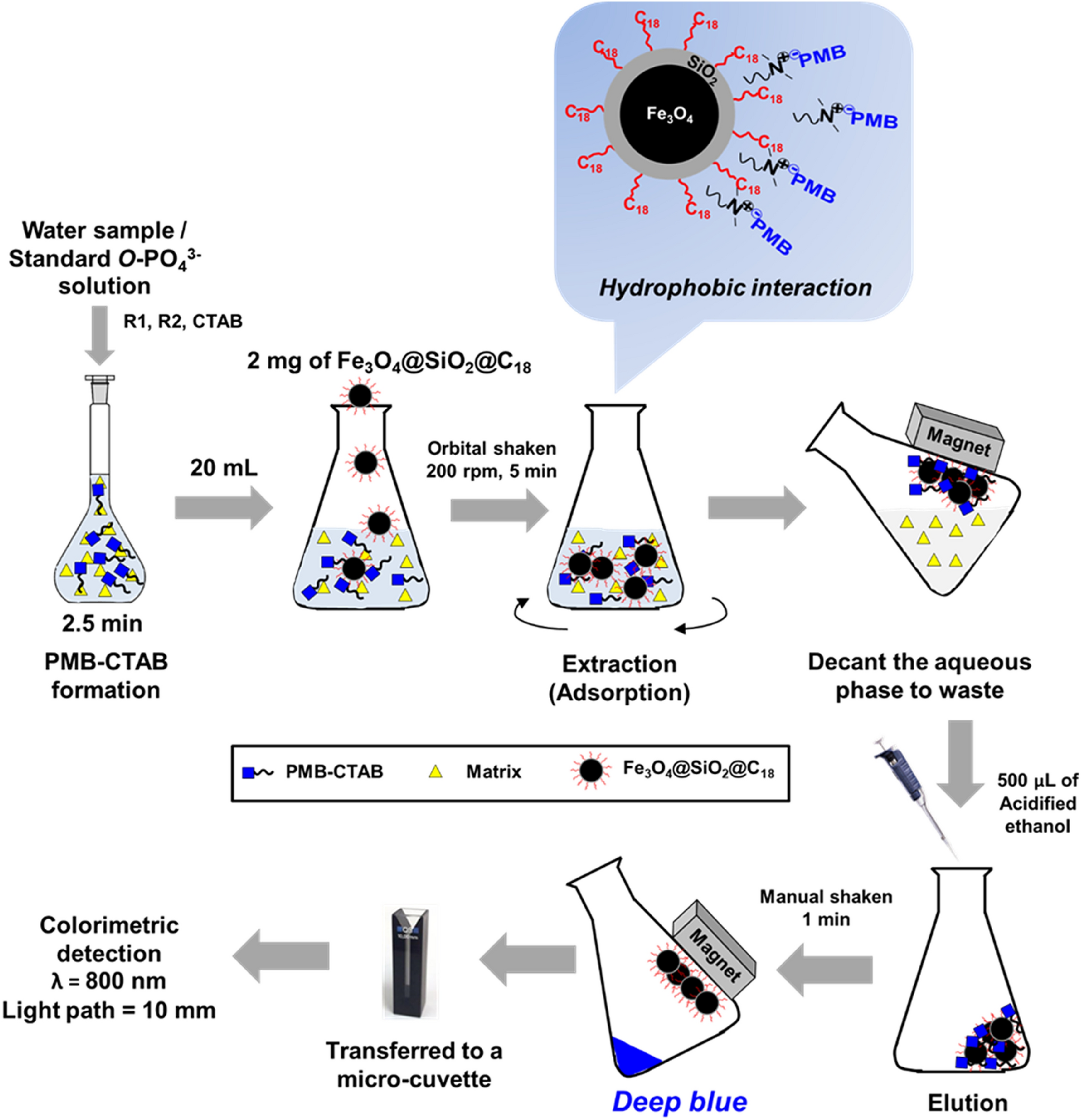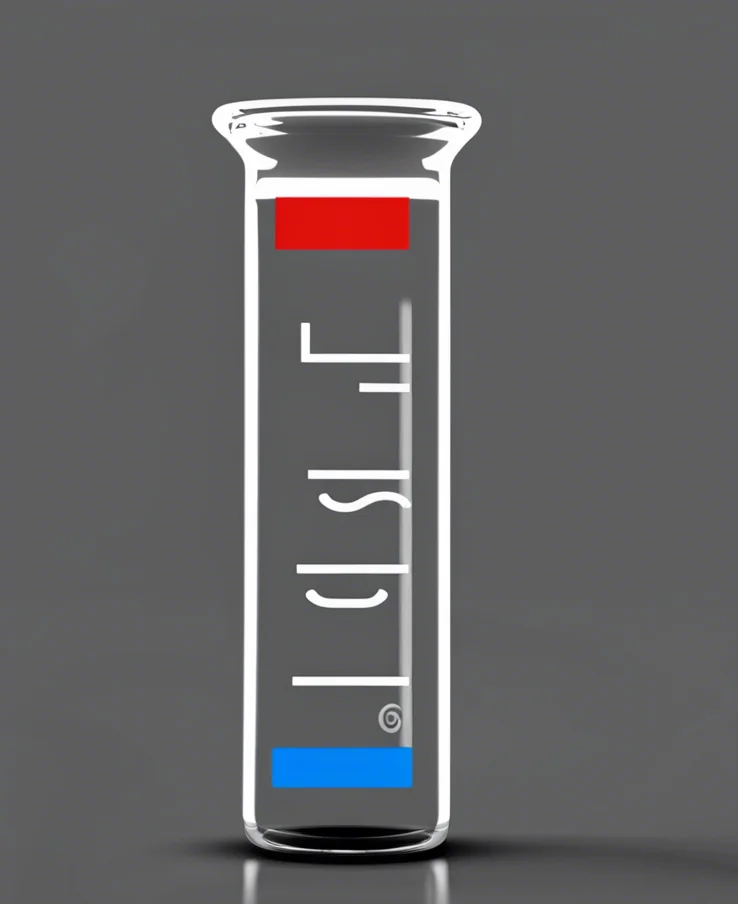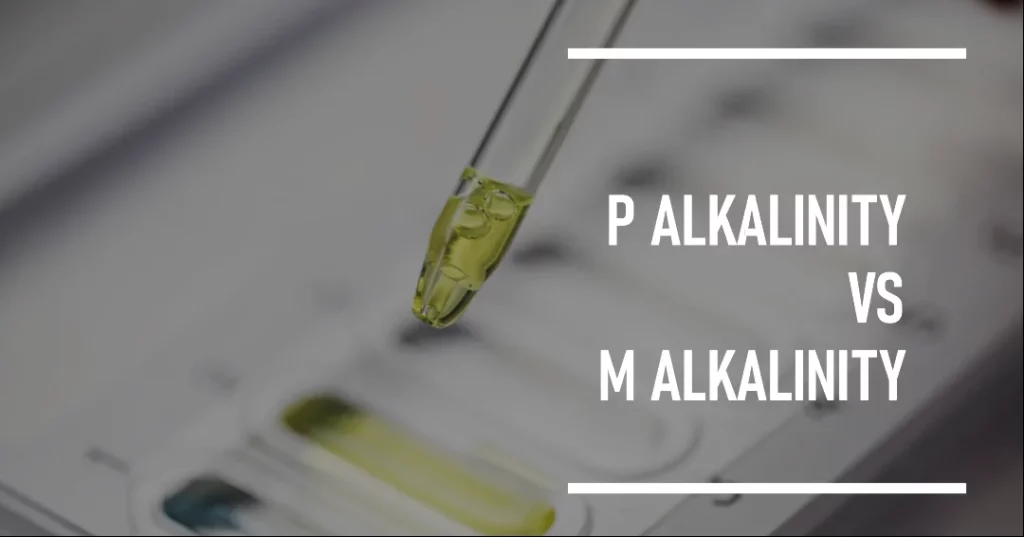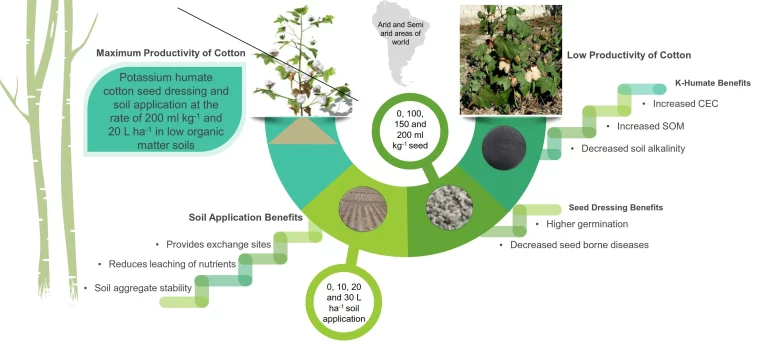Difference Between p Alkalinity and m Alkalinity in water
Key Difference – p Alkalinity vs m Alkalinity

Alkalinity is an important parameter used to measure the buffering capacity of water, which refers to its ability to resist changes in pH. It’s important because it helps keep the pH level stable in water environments. pH is a measure of how acidic or basic something is. Total alkalinity is commonly test to check the quality of titrating a water sample and the environment. It is express as milligrams per liter (mg/L) or parts per million (ppm) of equivalent calcium carbonate (CaCO₃).
When it comes to alkalinity, two terms that often surface are m Alkalinity and p Alkalinity.
P alkalinity typically measures the concentration of bicarbonate (HCO3-) and carbonate (CO3^2-) ions in a water sample. m alkalinity measures the concentration of hydroxide (OH-) ions, which primarily represent hydroxide alkalinity.
Understanding the differences between these two types of alkalinity is crucial in water treatment and management of pH levels.

So, let’s embark on a journey to demystify the disparities p Alkalinity vs m Alkalinity.
Side by Side Comparison – p Alkalinity vs m Alkalinity in Tabular Form
| Aspect | p Alkalinity | m Alkalinity |
|---|---|---|
| Indicator Used | Phenolphthalein | Methyl Orange |
| pH Range for Color Change | 8.3 – 10.0 | 3.1 – 4.4 |
| Alkalinity Determined by | Hydroxide ions (OH–) and half of the carbonate ions | Hydroxide ions (OH–), carbonate ions (CO32-), and |
| (CO32-) | bicarbonate ions (HCO3–) | |
| Measurement Range | Limited to hydroxide and half of carbonate alkalinity | Includes hydroxide, carbonate, and bicarbonate |
| alkalinity | ||
| Applications | Suitable for certain alkalinity assessments, such as | Offers a broader perspective on alkalinity, including |
| boiler water analysis | natural water systems and industrial processes |
How to Test Alkalinity in a Water Sample
Titration Method

The titration is a way to measure the amount of acid in a water sample. In this method, a known amount of acid solution is add to the water sample until there is a color change. This color change shows that the endpoint has been reach. Phenolphthalein is often use as the indicator for measuring p alkalinity, and caustic is use for measuring m alkalinity.
| Advantages | Disadvantages |
|---|---|
| Relatively accurate and precise measurements | Requires specialized equipment and materials |
| Can measure both p alkalinity and m alkalinity | Time-consuming process |
| Provides detailed alkalinity information | Titration errors can occur |
Colorimetric Analysis

Colorimetric analysis is a quicker and easier method for determining alkalinity levels in water samples. This method involves adding a reagent to the sample that changes color depending on the alkalinity level. The intensity of the color can be measure using a colorimeter or spectrophotometer to determine alkalinity levels.
| Advantages | Disadvantages |
|---|---|
| Quick and easy to perform | Less accurate than the titration method |
| Does not require specialized equipment or materials | May only measure total alkalinity |
| Results can be obtained in real-time | May not be suitable for certain water types or conditions |
The choice of method depends on the purpose of the test, the accuracy required, and the complexity of the sample.
Also read: Difference Between Potassium Humate and Humic Acid
What is p Alkalinity

p Alkalinity, also known as phenolphthalein alkalinity, is a measurement that determines the alkalinity of a water sample using the phenolphthalein indicator. Now, you might be wondering, what is an indicator? Well, think of it as a color-changing detective that helps us identify certain chemical properties.
When it comes to p Alkalinity, phenolphthalein takes the stage as the indicator of choice. Picture this: you’re in a chemistry laboratory, conducting a titration experiment. As you add the titrant (an acid of known concentration) to the water sample, you observe a magical color change in the solution.
This color change occurs within a specific pH range, typically between 8.3 and 10.0. The point at which the color change happens is call the endpoint.
The measurement of it involves determining the amount of hydroxide ions (OH–) and half of the carbonate alkalinity present in the water sample. It’s like unraveling the mysteries of alkaline compounds by decoding their chemical composition.
What is m Alkalinity

On the other side of the alkalinity spectrum, we have m Alkalinity, also known as methyl orange alkalinity. m Alkalinity is a measurement that determines the alkalinity of a water sample. However, it utilizes a different indicator, methyl orange, to perform the analysis.
Imagine yourself back in the chemistry laboratory, this time with a fresh water sample awaiting analysis. As you add methyl orange to the solution, you notice another mesmerizing color change. The magic occurs within a different pH range, typically between 3.1 and 4.4. This distinctive color change serves as a signal, indicating the endpoint of the titration.
When it comes to m Alkalinity, the measurement involves determining the alkalinity given by hydroxide ions (OH–), carbonate ions (CO32-), and bicarbonate ions (HCO3–). It provides a comprehensive understanding of the alkalinity of the water sample, as it considers the contributions of all these carbonate species.
Differences Between p Alkalinity and m Alkalinity

Source of Alkalinity
p Alkalinity is primarily contributed by bicarbonates (HCO₃⁻), whereas m Alkalinity includes all alkaline compounds present in water, such as hydroxides (OH⁻), carbonates (CO₃²⁻), and bicarbonates (HCO₃⁻).
Measurement Methodology
p Alkalinity is measured using phenolphthalein as an indicator, which changes color from pink to colorless when the pH drops below 8.3. m Alkalinity is determined using methyl orange as an indicator, which shifts from yellow to red when the pH drops below 4.5.
Chemical Composition
p Alkalinity mainly consists of weak bases, such as bicarbonates, while m Alkalinity encompasses both weak and strong bases, including hydroxides, carbonates, and bicarbonates.
Acid/Base Reactions
p Alkalinity is primarily involve in the buffering of weak acids, maintaining the pH within a specific range. In contrast, m Alkalinity is more capable of neutralizing both weak and strong acids due to its broader range of alkaline compounds.
Factors Affecting Alkalinity Levels
- Geological Composition of the Watershed: The nature and composition of the surrounding soil and rocks can impact the alkalinity of water bodies.
- Dissolved Minerals and Salts: The presence of certain minerals and salts in water can contribute to its alkalinity.
- Carbon Dioxide Levels: Carbon dioxide dissolves in water and forms carbonic acid, affecting alkalinity.
- Human Activities: Industrial discharges, agricultural runoff, and other human activities can introduce chemicals and pollutants that influence alkalinity levels.
Summary
In simple terms, p Alkalinity and m Alkalinity are ways to measure the amount of alkalinity in water. Alkalinity is a measure of how much acid can be neutralized in the water.
p Alkalinity looks at hydroxide ions and half of the carbonate alkalinity. It gives us some information about the water’s alkalinity.
m Alkalinity is a broader measurement that considers hydroxide, carbonate, and bicarbonate ions. It provides a more complete picture of the water’s alkalinity.
These measurements use different indicators and pH ranges to show the level of alkalinity. They help us understand the alkalinity of water and its importance in different situations.
So, when you come across discussions about alkalinity, remember p Alkalinity and m Alkalinity. They show us the amazing world of chemical analysis.







